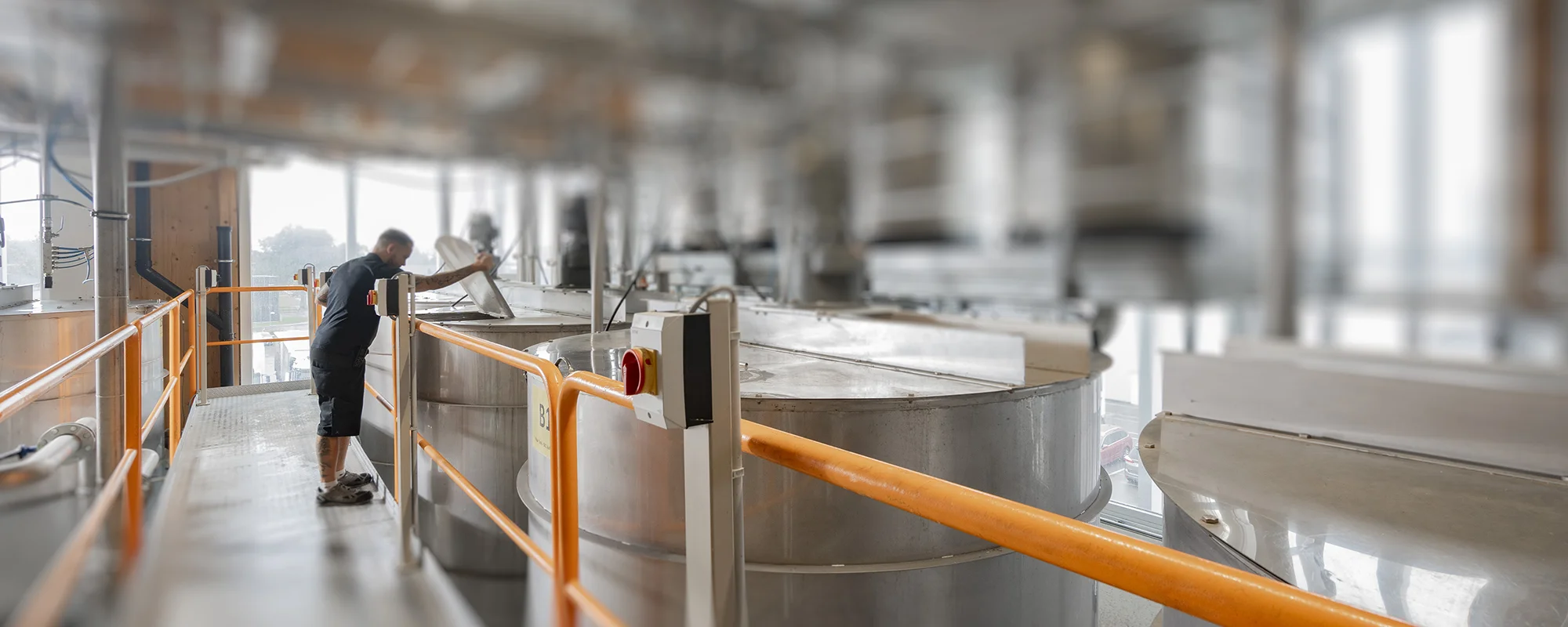

Flatz is one of Europe’s leading producers of molded pulp and has played a major role in helping to develop the technology. Innovative production methods and sustainable use of resources combine quality, versatility and protection of the environment.
Flatz offers molded pulp components in three different versions:
In large quantities, molded pulp parts can also be individually colored and even have logos, etc. pressed into them.
The molded pulp is produced using waste materials from corrugated board production and even the water that is used is obtained from condensation derived from other production processes.
The option to produce different packaging materials such as corrugated board, molded pulp and EPP/EPS particle foams centrally in one location means that Flatz is also able to develop and make bespoke, innovative and complex composite packaging easily and without needing to travel long distances.
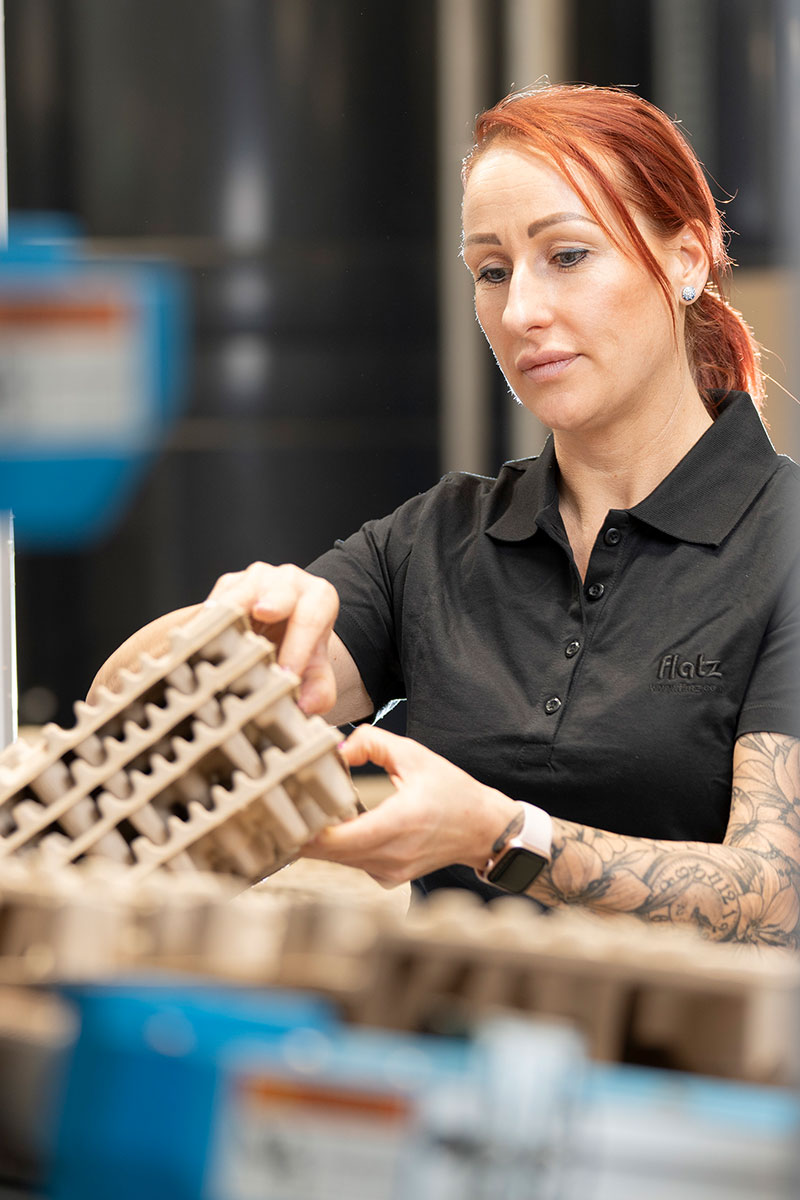
In the conventional process, the corrugated board materials are prepared and mixed with water in a pulper. Within the suspension, the fibers are completely freely dissolved, skimmed using a forming tool and thus transformed into a new form. The liquid in the molded pulp product fully evaporates on the belt of a circulating air furnace – the fibers are securely bonded together without any additives.
For a higher level of precision and smoother surface, molded pulp packaging can optionally be repressed again for a few seconds in a heated press tool.
Features:
With thermoforming, the still wet molded pulp product is not dried in a furnace, but is instead dried with dimensional stability in the hot press tool. The result is a fine surface structure on both sides and the highest level of quality in the molded pulp production process.
Features:
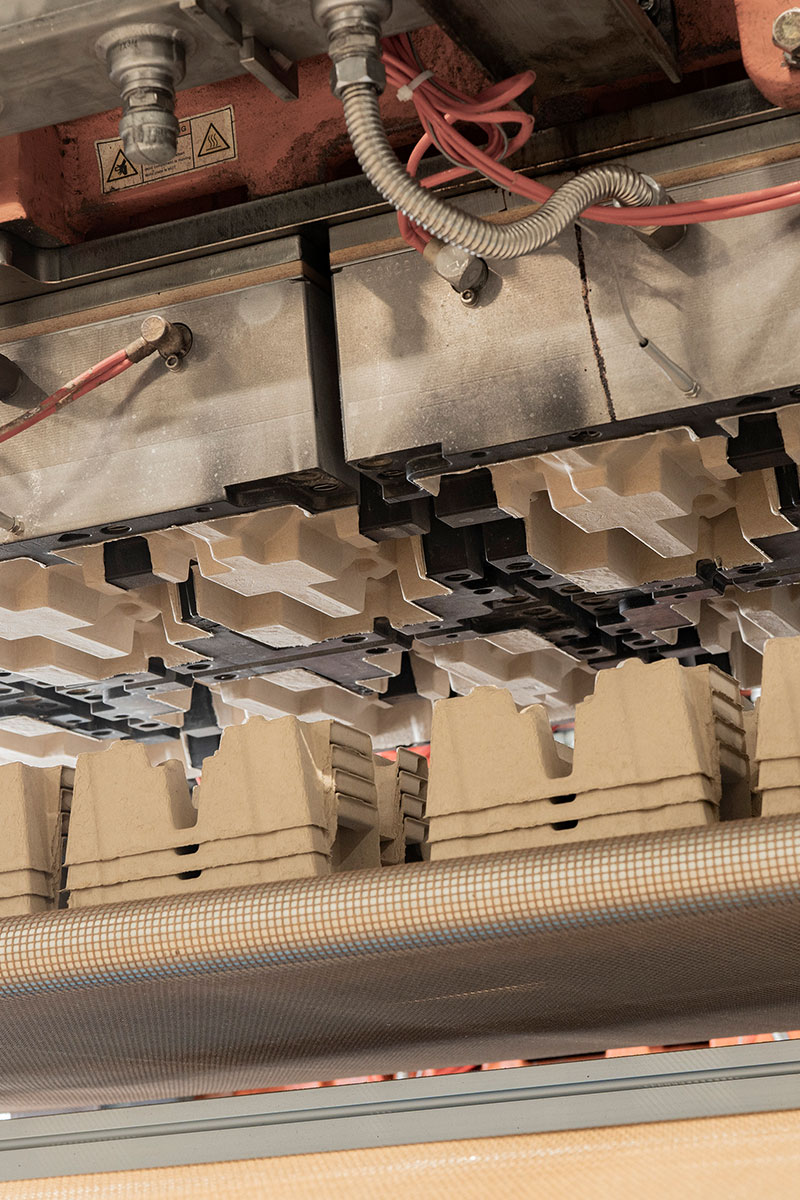
from the input of the die-cut scrap to a pressable pulp
produce molded pulp packaging around the clock: conventional, using thermoforming and for primary contact with food
ensure that the molded pulp solutions are produced effectively
It takes only a week for you to get your digital prototype as a 3D visualization.
You’ll receive a traditional sample after around 4 to 6 weeks.
With our production facilities in Vorarlberg, we offer maximum flexibility and can produce your molded pulp packaging, starting with the prototype right through to a large batch.
If you want a combination of different packaging materials, we can offer you everything you need from a single source. Benefit from using one of Europe’s leading packaging manufacturers.
Our certified in-house ISTA laboratory tests the molded pulp packaging solution under different temperatures and humidity levels, vibration and load impacts and simulates the load-bearing capacity in drop tests. For safe transport.
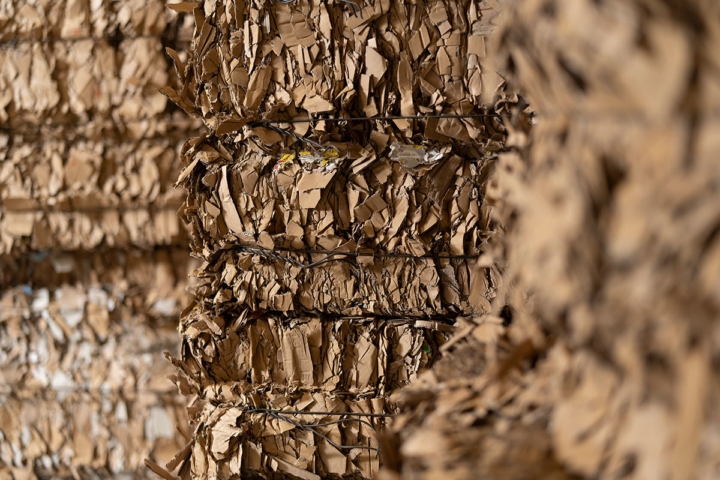
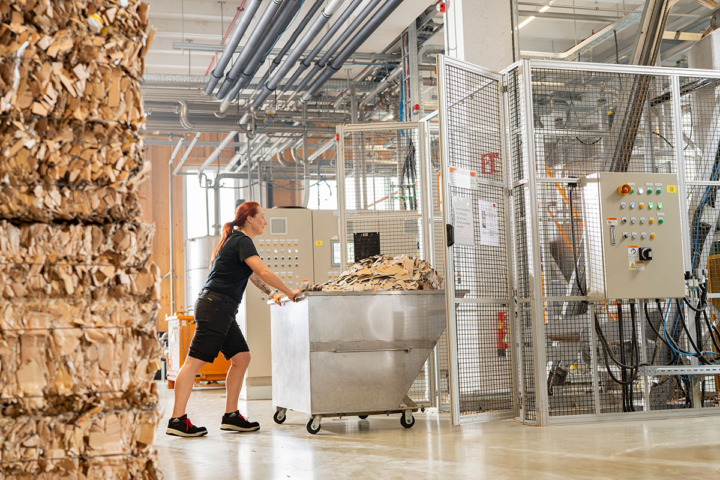
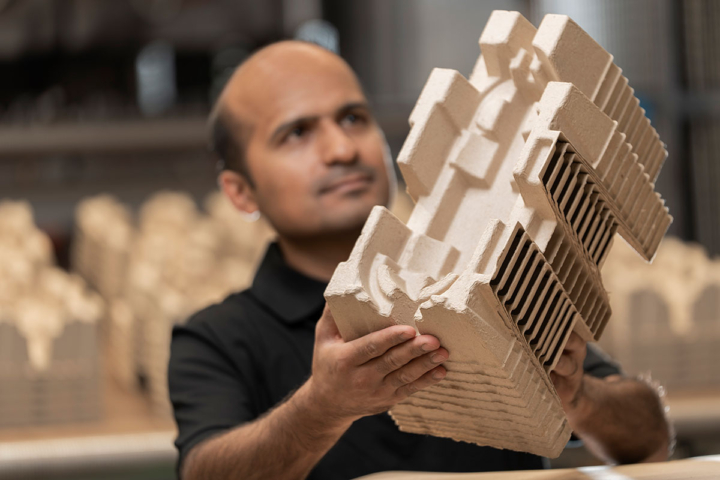
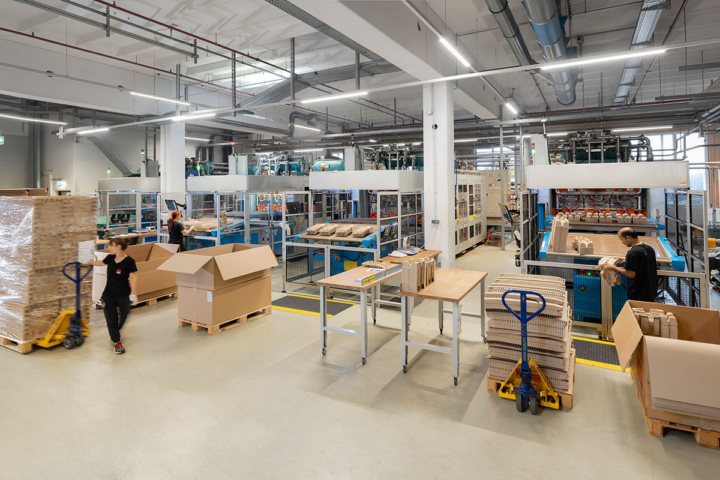
In the conventional molded pulp process, the fibers are poured into the mold and dried. The repressed process includes an additional pressing step in order to produce a smoother surface and a more precise shape.
The production process in detail:
In the conventional process, the corrugated board materials are prepared and mixed with water in a pulper. Within the suspension, the fibers are completely freely dissolved, skimmed using a forming tool and thus transformed into a new form. The liquid in the molded pulp product fully evaporates on the belt of a circulating air furnace – the fibers are securely bonded together without any additives. Conventionally fabricated products can then be repressed for a few seconds again in a heated press tool, which produces a higher level of precision of molded pulp component.
Features:
The repressing results in a higher density, a better finish and a more precise fit. It also improves the mechanical properties of the end product.
When it comes to thermoforming moulded pulp, the fiber material is heated and formed into a specific shape. This enables more complex designs and often a better consistency of product.
The production process in detail:
With thermoforming, the still wet moulded pulp product is not dried in a furnace, but is instead dried with dimensional stability in the hot press tool. The result is a fine surface structure on both sides and the highest level of quality in the molded pulp production process.
Features:
Although this is dependent on the specific product requirements, thermoforming is frequently the better option for high production volumes and consistent quality.
Yes, thermoforming generally allows more complex and detailed designs compared to conventional molded pulp methods.
Yes, different production methods have different cost structures. Get in touch with us so we can find the best production method to suit your needs and prepare a bespoke offer for you.
All of our molded pulp methods are eco-friendly because we obtain the raw material from die-cut sections from our own corrugated board production. You can read about all the advantages when it comes to sustainability and environmental protection here.
The durability and level of protection may vary depending on the specific requirements of your product. However, thermoforming and repressed molded pulp can often provide better mechanical properties.
T +43 5574 83 290 0
F +43 5574 83 290 205
verpackungen@flatz.com
Hängt von den Anforderungen ab: Isolierend mit Transportschutz, Mehrweg mit einfachem Handling, hoher Transportschutz und doch leicht und natürlich auch die Optik. Geht alles, fragen Sie uns einfach.